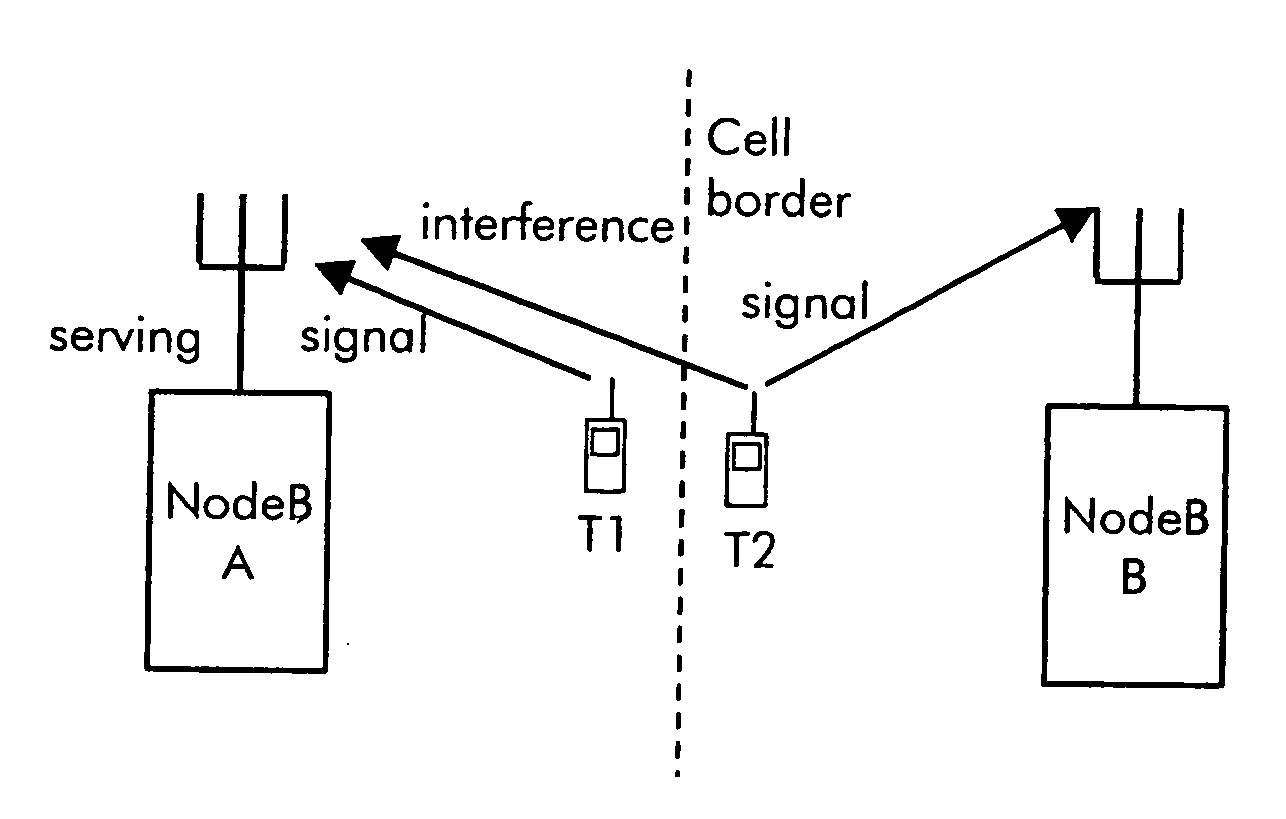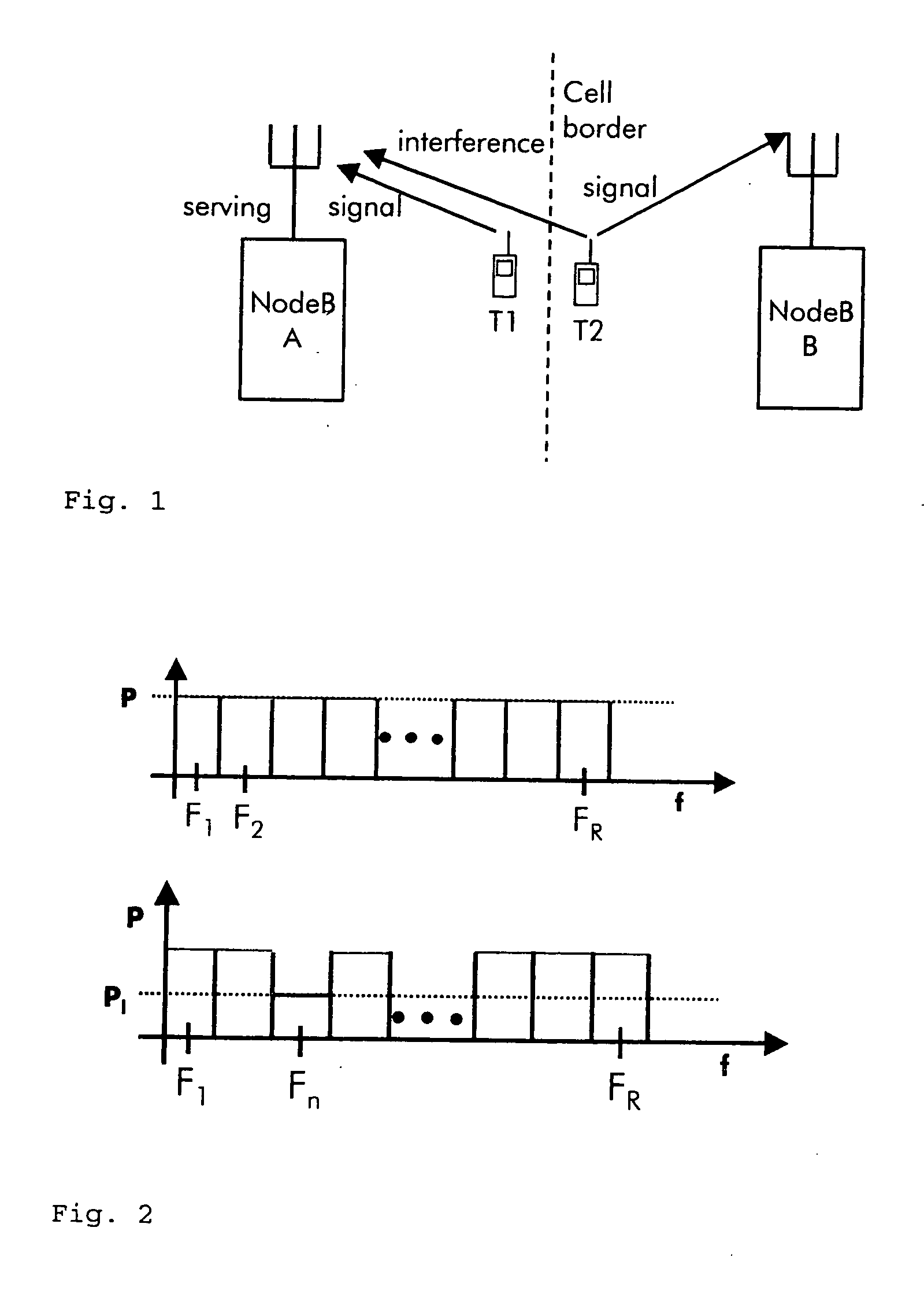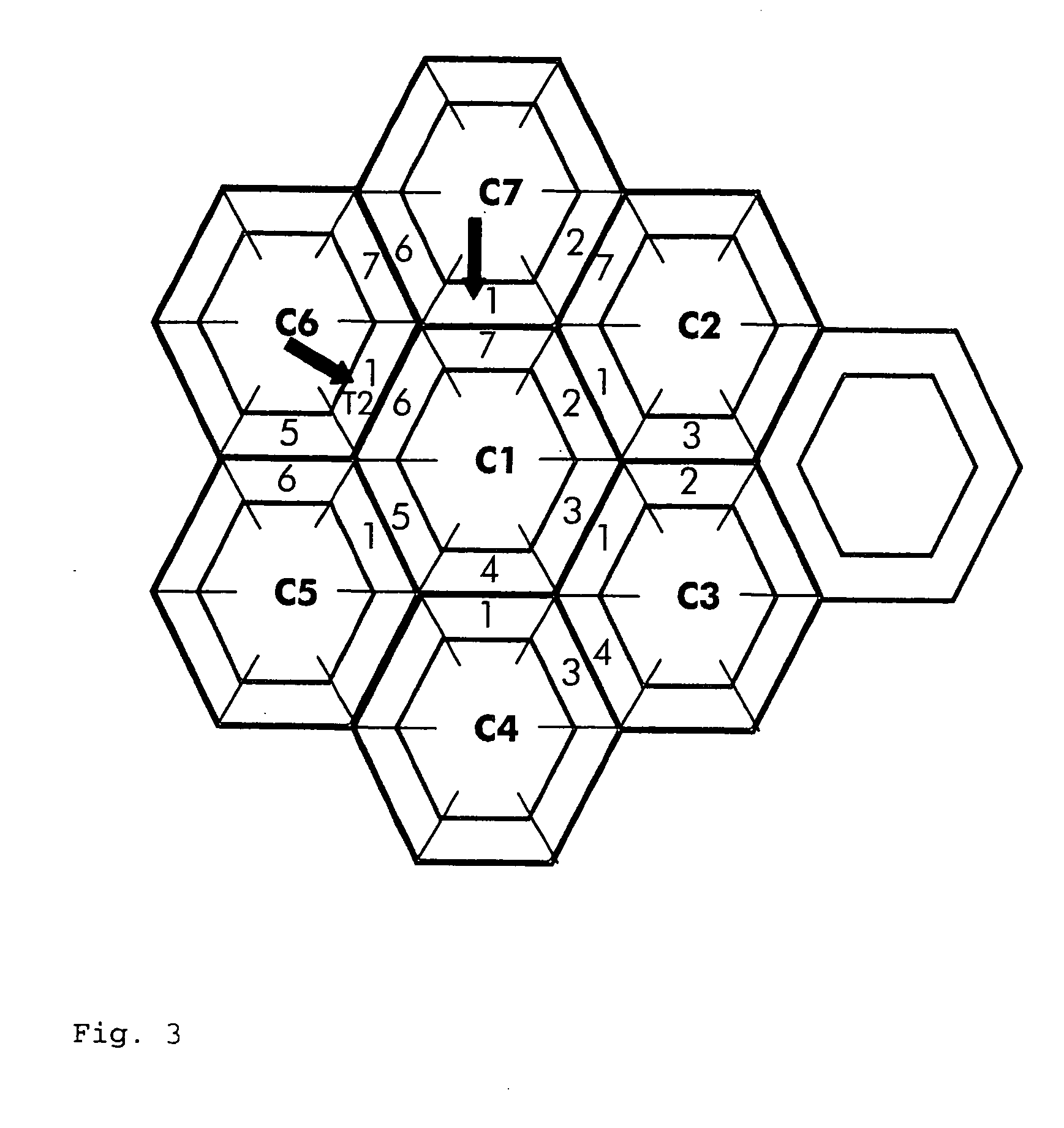Method for uplink interference coordination in single frequency networks, a base station, a mobile terminal and a mobile network therefor
a single-frequency network and interference coordination technology, applied in the field of uplink interference coordination in single-frequency networks, can solve the problems of wasting resources for the inner area of the cell, reducing the available uplink resources per cell very significantly, and reducing the uplink capacity. , to achieve the effect of reducing interference, avoiding extensive signaling of interference disturbance reports, and reducing interferen
- Summary
- Abstract
- Description
- Claims
- Application Information
AI Technical Summary
Benefits of technology
Problems solved by technology
Method used
Image
Examples
Embodiment Construction
[0058] A mobile network according to the invention comprises mobile terminals and base stations.
[0059] Each of said mobile terminals is connected to one or multiple of said base stations, and the base stations are in turn connected via base station controllers to a core network.
[0060] The mobile terminals comprise the functionality of a mobile terminal for transmission and reception in a single frequency network as e.g. an OFDM network, i.e. they can be connected to a mobile network by means of a base station.
[0061] Furthermore, a mobile terminal according to the invention comprises means for evaluating in which cell or region of a cell it creates interferences by means of downlink interference or path loss measurements, and the mobile terminal comprises means for demanding to be scheduled to a dedicated subset of the cell or region of the cell in which it creates the strongest interferences.
[0062] The base stations comprise the functionality of a base station of a single freque...
PUM
 Login to View More
Login to View More Abstract
Description
Claims
Application Information
 Login to View More
Login to View More - R&D
- Intellectual Property
- Life Sciences
- Materials
- Tech Scout
- Unparalleled Data Quality
- Higher Quality Content
- 60% Fewer Hallucinations
Browse by: Latest US Patents, China's latest patents, Technical Efficacy Thesaurus, Application Domain, Technology Topic, Popular Technical Reports.
© 2025 PatSnap. All rights reserved.Legal|Privacy policy|Modern Slavery Act Transparency Statement|Sitemap|About US| Contact US: help@patsnap.com



